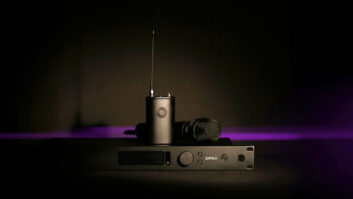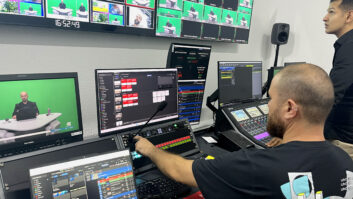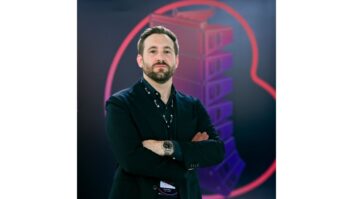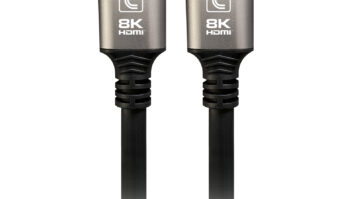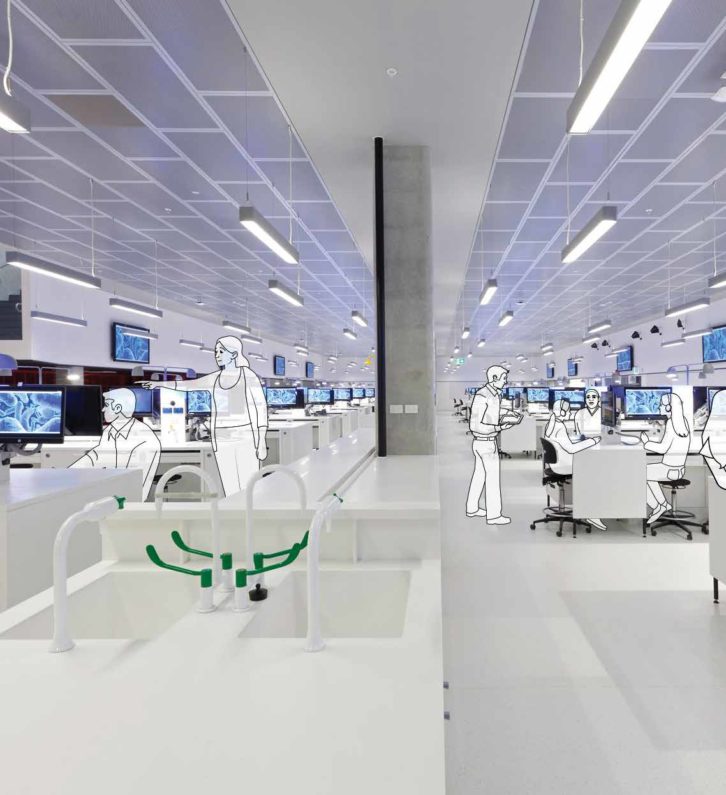
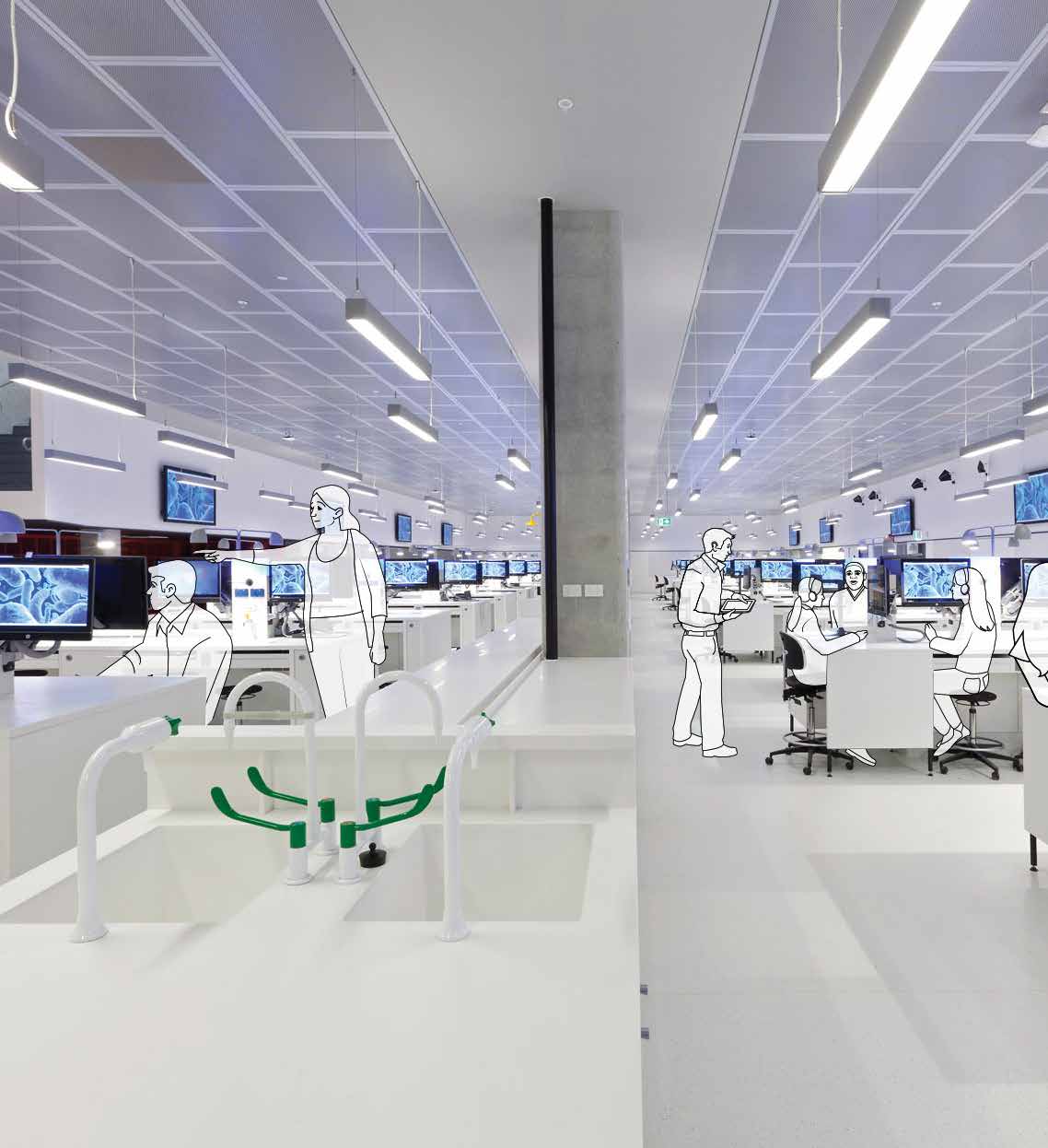
When the Super Lab is empty, it only hints at its potential as a platform for teaching and collaboration. It looks like a place where dynamic stuff could happen—once the people arrive. It stands in wait, like a vast stage, or a town square (it could also suggest less elevated environments, like a call center). If your picture of “lab” is a Steampunk hive of chemistry, physics, and biology, with people huddled over beakers, transformers, and dead frogs, you might even be disappointed.
Certainly digital and virtual learning brings debate about how much screen time is too much. But students are native to digital now, almost as if their brains are part device. Their workflow preferences can’t be overlooked. And there’s another, more important, positive to this digital, interconnected world: electronics and devices have helped break down artificial barriers among scientific disciplines and age groups, as people choose the ideas and people they interact with. This isn’t new—the gathering together of age groups and disciplines for collaboration and serendipity is the oldest and most productive form of education. Top-down silos are relatively new.
This is all very lofty talk when it comes to AV, which is about cable that terminates correctly or doesn’t, and signal that arrives or doesn’t. And of course, you don’t even need AV to flip a classroom or mix it up with ages and disciplines. But if you are going to have AV, it is imperative that it elegantly serve the broader vision. Merely having AV is not a vision.
According to UTS senior AV project manager Rob Hardy, the vision for Super Lab was about parallel learning and having students discover other scientific disciplines and mix with students from other year groups—“to cross-pollinate and at times collaborate.” Educators wanted first-year biology students to catch a glimpse of the post-graduate chemistry curriculum. They wanted to spontaneously let a teacher go from addressing eight students to 200. If a student in one group asked an important question, it could be immediately available to one or more other groups. Student groups are configured to suit the day’s teaching, not the other way around.
The Super Lab is 60 meters long with 26 bench configurations. There are eight student seats at each bench for a total of 220 students; each alternating bench has a teaching position for a total of 12 teachers who can teach simultaneously to any number of students in the room, and who can move throughout the lab with their portable controls.
Each student seat has an HP all-in-one touchscreen computer on an articulated arm that receives the live-streamed lecture(s) encoded by 12 Matrox Maevex encoders (one for each teaching position). The content distributes through a Crestron switcher to the students’ computers where the streams are decoded via VLC. There are no speakers in the room; audio is via Sennheiser wireless headphones served through BSS DSP and a Williams Sound infrastructure (we’ll come back to that).

The teacher has a lectern’s worth of equipment accessed through a simple app-driven, drag-and- drop Crestron XPanel interface. To begin teaching, they use the panel’s graphical floor plan to select which seats they will send live video to. All audio and video will be automatically directed, including the wireless audio from the teacher’s Sennheiser beltpack. Teachers can also feed content from the internet, a memory stick, document camera, or mobile device. (They can also access 12 65-in. NEC wall-mounted LCD screens to display any content in real time).
The underlying model of the Super Lab is still lecture-based: one teacher to a few or many students. But the flexibility of student groupings and content delivery allows teachers to orchestrate a much more dynamic experience, with easy and accessible technology at their fingertips. In this environment, biology, chemistry, and physics can run in parallel, or combine. Up to 12 labs can run simultaneously. The AV system is what and shapes the dynamics of the room.
Hardy says a critical piece of the puzzle was the encoder. “When we first started investigating solutions for this lab it was going to be prohibitively expensive with 220 decoding positions,” he explains. The key to the Maevex affordability is support for VLC. VLC media player decoding (from the original term Virtual LAN Client) utilizes a computer’s GPU, so at UTS, the Super Lab HPs are their own decoders. The Maevex encoders can be controlled with Crestron control via an API, which afforded the kind of UI and customization that UTS needed. “If we hadn’t found Matrox we would have had to go point to point,” Hardy says.
“Maevex can stream to an unlimited number of endpoint locations,” explains Matrox’s Mark Bush. “Because we’re using an open standard you can set an IP address, use VLC and decode in software using the PC’s GPU. The Maevex-encoded stream can be available to many hardware or software players, including free ones like VLC. Pretty much any modern PC can decode best quality.” The default Maevex HDMI stream is 1080p/60 4:2:0 at 15Mbps; the bitrate can drop to accommodate processing or bandwidth limitations.
At press time, Matrox announced the Maevex 2 product line. It will feature a variety of form factors, including PCI Express cards, stand-alone appliances and OEM versions of the hardware and software. It will support additional protocols and quad HDMI capture and encode. In the card form factor it’s possible to stack up to 64 4K HDMI captures which can be streamed and/or recorded. up to 64 channels of 4K at 60Hz. It adds color space options for 4:2:2 and 4:4:4. The dual options of included PowerStream software and an expanded API, will continue to drive interoperability options.
Matrox’s Ron Berty explains that the interoperability and control flexibility of the Maevex encoder was important to UTS. “We weren’t forcing a proprietary control on them. Through the API, Crestron can manage the interface, the switching and scheduling. We give you a built-in centralized option, or you can use the API to integrate into another package.”
Although UTS specifically did not include distance learning or external streaming in the specification for the Super Lab, the opportunity is there to do it; it’s simple to distribute Maevex-encoded content worldwide via a third-party streaming media server like Wowza for WAN or cloud..

“Audio turned out to be more complex than the video,” Hardy recalls. Students hear the lecture wirelessly on headphones (they are issued their own pair to bring to class). If they want to ask a question, they press a button that lights up the desk-mounted bollards and signals the teacher’s interface panel. The teacher can activate the hardwired microphone associated with that location for the student to use. The teacher and all students in the designated channel grouping hear the question in their headphones.
The audio incorporates an adapted Williams Sound hearing augmentation system that is typically used to support assisted listening in theaters or art museum tours. So effectively there are multiple “tour” groups within the SuperLab, interacting on different channels. The teacher’s audio goes from the Sennheiser beltpack through BSS DSP, and back to the students via the Williams Sound system.

“The systems ended up working really well together,” Hardy says, “and because there are no speakers in the lab, it’s really quiet. Even when there are over 200 people, it feels disciplined and not distracting.”
He says there is virtually no latency either in sound or picture. “The only latency that we do have is between the 65-in. LCDs and the all-in-ones,” Hardy points out. The LCD signal is Crestron DM direct, so there’s a slight difference between the image on those screens and on the all-in-ones. “But people are only ever looking at one or the other, so it works.
“A lot of thought went into making it as simple as possible,” Hardy sums up. “Teachers are of course very clever but their emphasis is on their subject matter. They don’t want to have to think about the technology.
“It’s been very successful from the teacher and student point of view. Retention of students went up since we began using the system last year. We have found a lot of crosspollination.” So, essentially, the SuperLab works as designed.
Product At Work:
This encoder extends or records up to 1080p60 video and audio at H.264 over a standard IP network at user-defined bit rates. It can stream to Maevex decoders or any device/PC that supports required network protocols. Included PowerStream software is used for remote discovery and management and lets administrators define multiple stream parameters and balance network bandwidth consumption and quality. Available API for custom applications.







